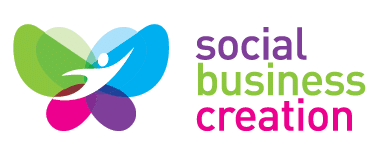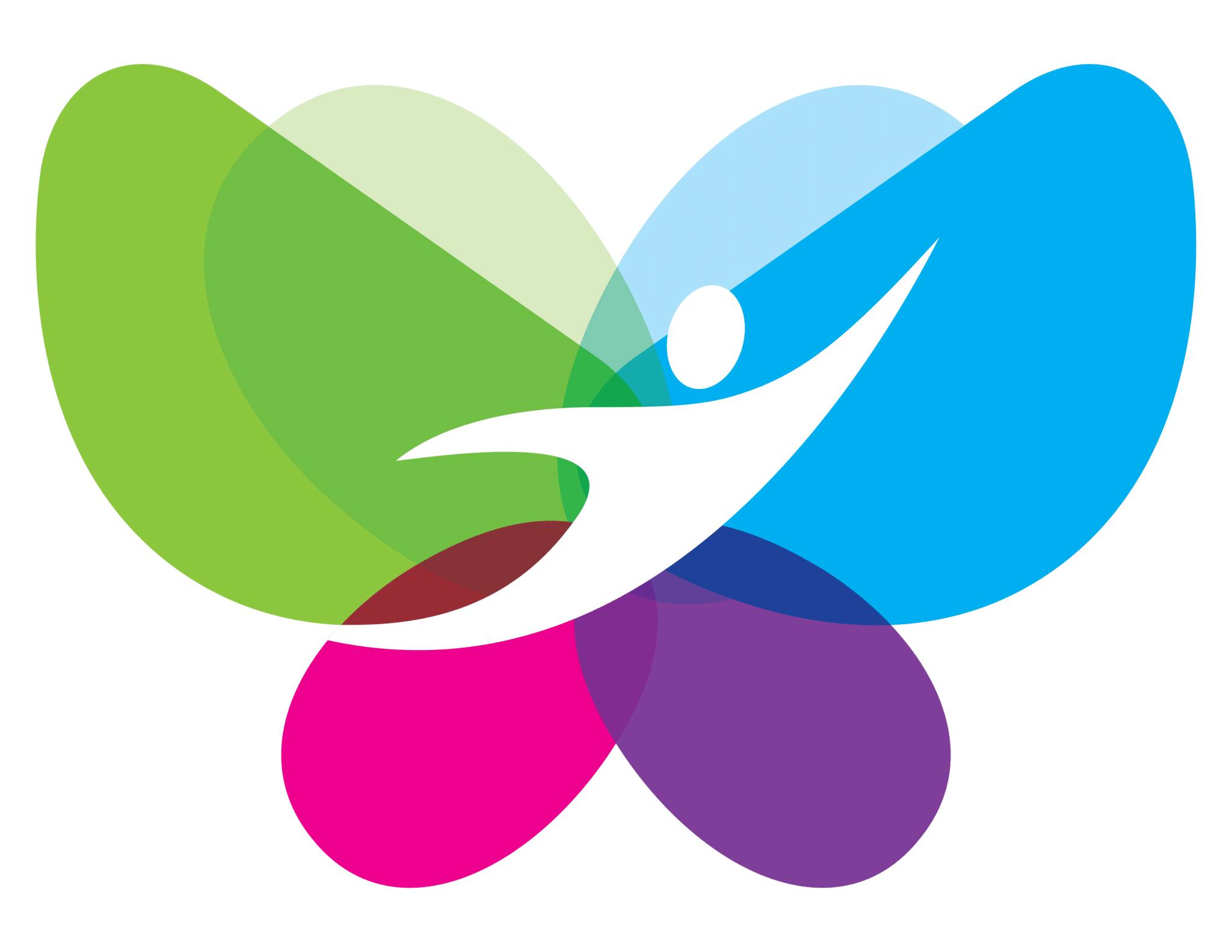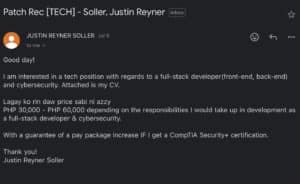EXECUTION AND SCALEUP
Kindly review our video pitch below:
If the uploaded video isn’t working, kindly proceed to this youtube link: https://youtu.be/lU1dlm3pcck.
Kindly review the demo of our product in the video below:
To check the full documentation from our fieldwork, click this link: https://drive.google.com/drive/folders/19cVjsiuLVgVbYx6p410p1FfZ-QMS5t1O?usp=drive_link.
A. Social business description
A1. Social mantra one-liner: Patch is a circular fashion marketplace for AI-assisted online thrifting.
In Round 2, we submitted “Patch is a smart circular fashion marketplace” as our one-liner. After getting feedback that the one-liner is still vague, we changed it to “Patch is a smart marketplace that makes thrifting simple and secure” which was clearer than our previous one-liner. However, we got feedback that while people generally know that Patch is a platform, it’s hard to understand its value proposition with just the one-liner. We also realized after numerous pitches every week that we usually have to explain what our one-liner means.
We tried to test “Patch is a circular fashion marketplace for trustworthy and AI-assisted thrifting” and generally got feedback from our sellers and the people in our waitlist that it was much more specific because of the mention of “AI-assisted.” However, being “trustworthy” doesn’t make much of a mark, and even one of our advisors mentioned that it doesn’t seem to highlight what differentiates us from usual e-commerce platforms like Shopee, since they also offer security via escrow payments.
We therefore decided to change it to our final version which highlights the “AI-assisted” aspect as our value proposition better, since it seems to resonate with our buyers, sellers, and board of advisors. Feel free to watch videos of the feedback below:
We also tested if people would resonate more if we created one-liners for the features we are releasing first which are the delivery integration and checkout management, which are:
 |
 |
| Figure 1. One-liner for specific Patch features. | |
We primarily received good feedback and validated that there are people who need exactly these features as well, as seen in the following:
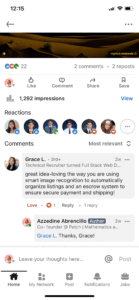 |
 |
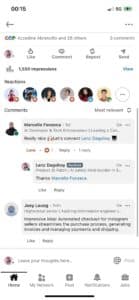 |
| Figure 2. Feedback on one-liner for specific Patch features. | ||
A3. Growth potential
Filipinos are embracing the secondhand apparel market
According to a 2022 survey by Milieu Insights, 8 out of 10 Filipinos shop secondhand (Tan, 2022). In the Philippines, there is an emerging interest in the secondhand apparel market and circular fashion alternatives. The 2021 Carousell Recommerce Index ranks the Philippines first among Southeast Asian (SEA) countries in market readiness and growth for apparel re-commerce. The index shows that 75% of Filipino consumers have a positive reception to selling apparel online, and 58% are comfortable shopping secondhand online (Carousell, 2021). Additionally, a 2021 Statista report found that Filipino online shoppers rank fourth globally among 25 countries in purchasing eco-friendly and sustainable products through e-commerce platforms, with 60% of respondents reporting at least one purchase, demonstrating relatively high environmental awareness and conscious consumption (Statista, 2023a).
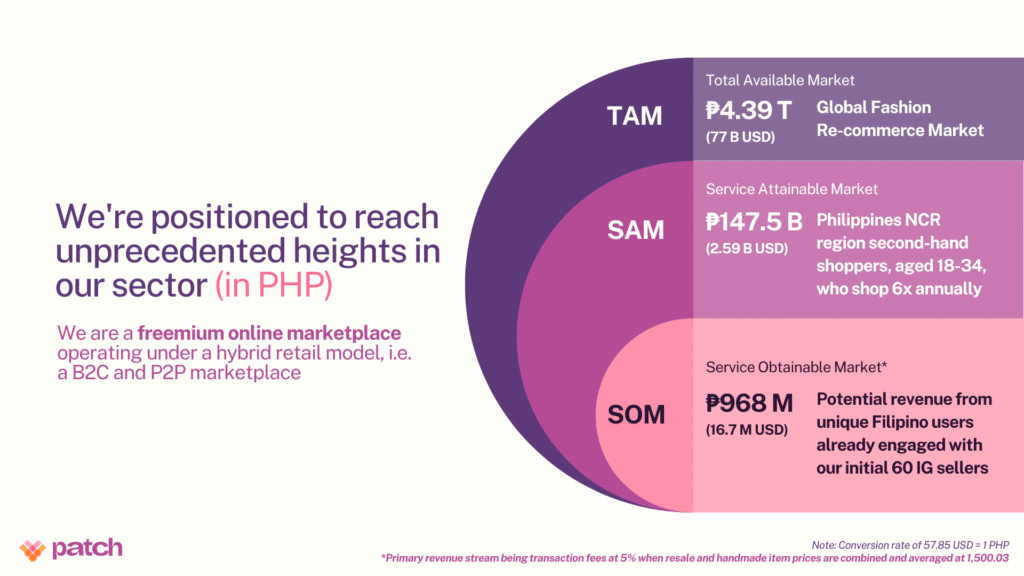 |
| Figure 3. TAM, SAM, and SOM of Patch. |
Majority of Filipino online shoppers are Gen-Z and Millennials aged 18 to 34
According to a Statista report on the demographic distribution of e-commerce users in the Philippines as of June 2023, the highest proportion of Filipino online shoppers, 35.6%, are in the 25-34 age range, while 29.3% are in the 18-24 age range. Combined, these younger generations make up 64.9% of all shoppers (Statista, 2023b). Additionally, the total available market for the re-commerce sector amounts to USD 77 billion, with the service attainable market in the National Capital Region’s re-commerce market amounting to USD 2.59 billion. Furthermore, the service obtainable market, calculated from the potential revenue from unique Filipino users already engaged with our initial 60 IG sellers, amounts to USD 16.7 million.
The Philippines offers promising prospects for re-commerce apparel
The Philippine market presents a promising opportunity due to high smartphone and internet penetration rates, coupled with significant engagement in fashion e-commerce and a strong preference for circular fashion practices like thrifting and reworking. In fact, the Philippines is the most receptive market for secondhand goods in the Greater Southeast Asian region. This is one of the findings from the inaugural Carousell Recommerce Index (2021), a Carousell Green initiative that highlights the importance of sustainability and re-commerce in the region.
Market interest in Patch
Since launching our waitlist in June 2024, we have attracted over 140 signups, including 20 high-volume partner sellers whose combined Instagram following is approximately 71k. With our established connections in the thrifting community, Patch can certainly address more markets and attract additional users.
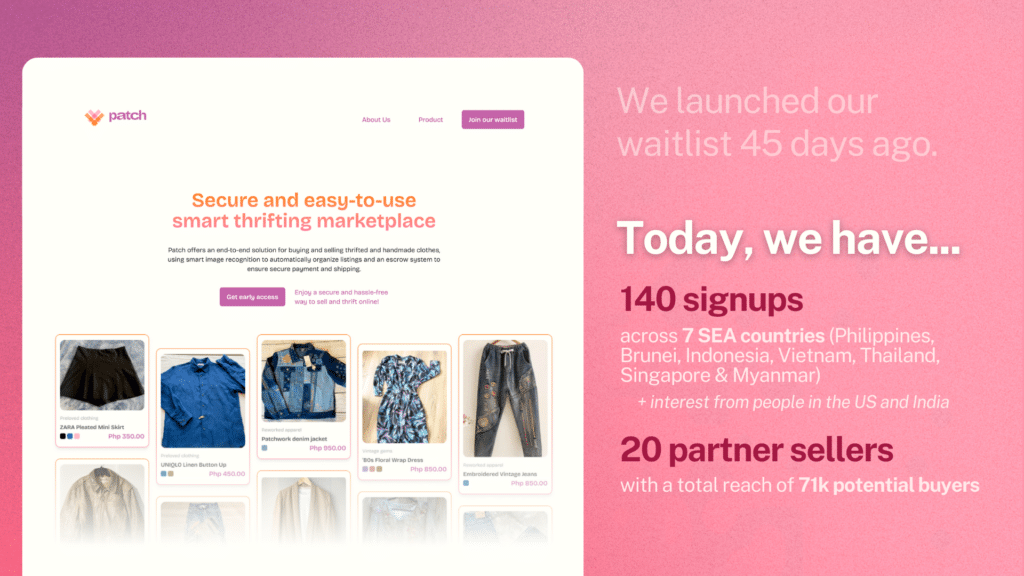 |
| Figure 4. Waitlist summary for Patch. |
This is where the market is headed
The global re-commerce market is already outpacing the traditional retail market worldwide. Today, it is valued at 248 billion US dollars and is growing 12.5 percent annually (ThredUp, 2023).
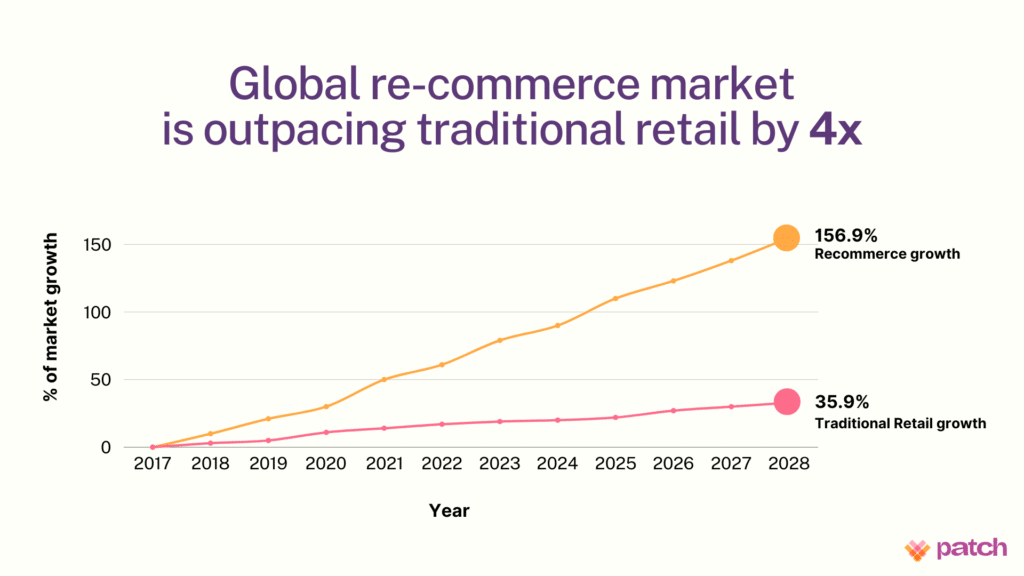 |
| Figure 5. Growth of the global re-commerce market compared to the traditional retail market. |
B. Resources and capabilities to execute
B1. Key capitals
Human Capital
Our team started with our four founders, and has been continuously growing over the past few months.
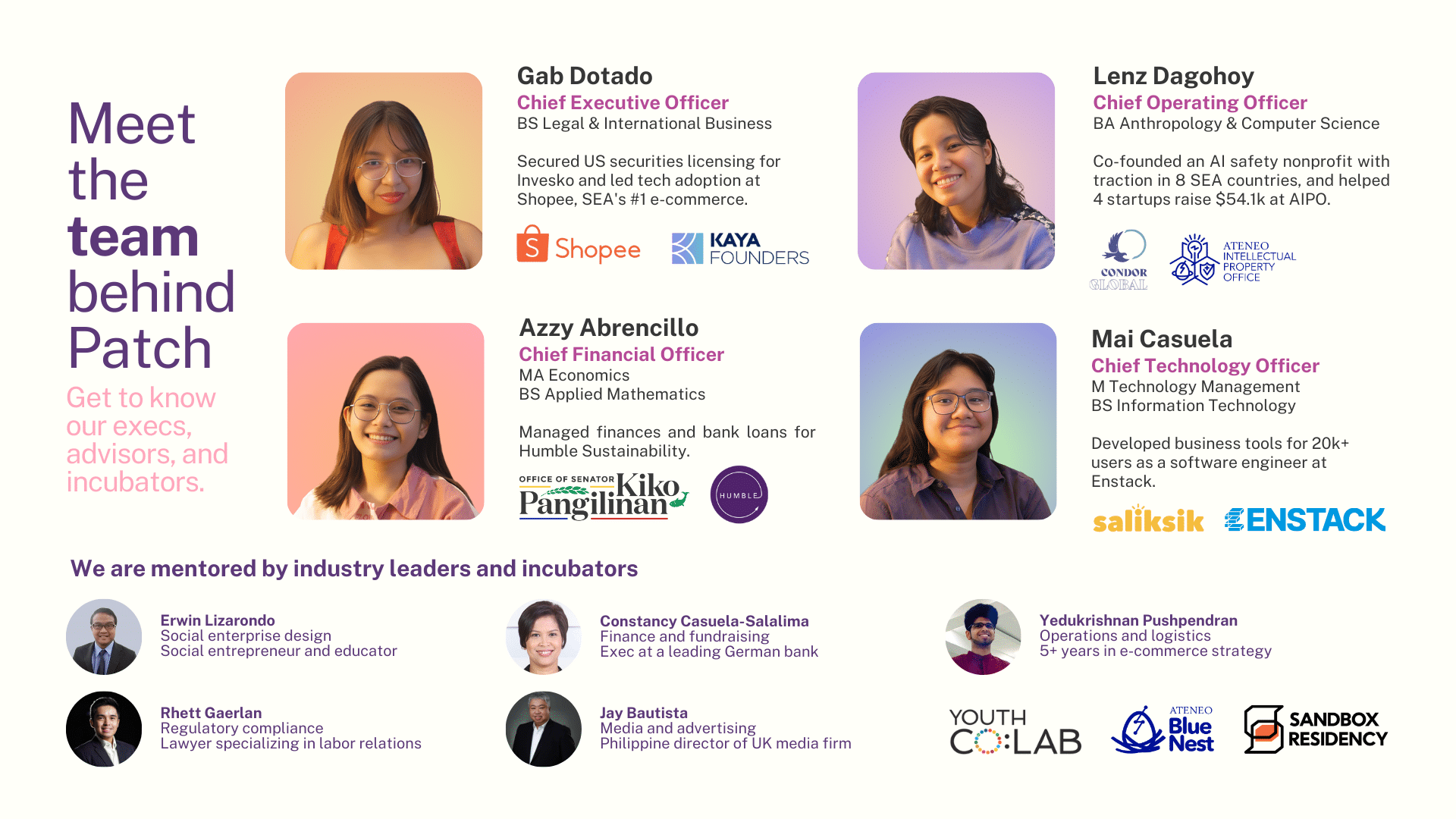 |
| Figure 6. The people behind Patch. |
As of writing, the following people have been in contact with the team and agreed to provide feedback and support throughout our development and execution.
| Table 1. Advisors for the team. | ||
| Name | Field of Expertise | Background |
| Erwin Lizarondo | Impact Creation and Social Entrepreneurship | He has been working within the social business ecosystem since 2017. His work focuses on early stage startups across Asia being in the board of three organizations and actively working with Environment-Tech Startup transitioning their research into a startup. |
| Constancy Casuela-Salalima | Finance and Fundraising | She is a highly experienced Banking and Finance professional with a strong background with financial analysis, banking operations, stakeholder engagement, and organization. She has been working at a leading German bank for almost 18 years. |
| Yedukrishnan Pushpendran | Operations and Logistics | He has 5 years of experience across India and the Philippines in roles spanning Strategy, Operations, and Product. He is an incoming MBA student at Stanford Graduate School of Business. |
| Atty. Rhett Gaerlan | Regulatory Compliance | He is the current Corporate Secretary of Cocogen Insurance, Inc. and is a licensed corporate lawyer specializing in labor relations. |
| Jay Bautista | Media and Advertising | He is the Managing Editor of Kantar Media, the world’s leading marketing data and analytics firm. |
Some proof of our conversations with these people are found in:
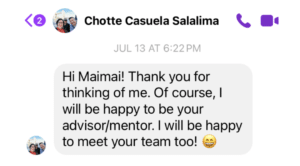 |
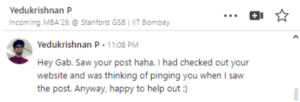 |
| Figure 7. Screenshot of some correspondence with some of our advisors. | |
We were also pre-incubated by UNDP and Youth Co:Lab’s Youth Social Innovation Lab program back in November 2023 to January 2023. From January 2024 to June 2024, we were incubated by Sandbox hosted by Arete. Our only current active incubation is Ateneo Blue Nest who are helping us move towards commercialization.
The team will be meeting with experts from Singapore and the United States of America in the next 3 weeks to pitch, get feedback, and possibly secure more mentors to help us through our scheduled launch in January 2025.
Moreover, there were 5 people who expressed interest in applying to Patch as an employee or intern and asked if we are already hiring. Three of which already sent their CVs as seen below:
|
|
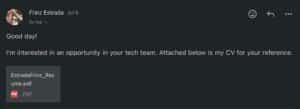 |
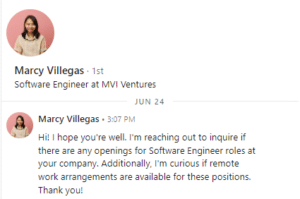 |
| Figure 8. People who expressed interest in Patch. | ||
However, we will only start hiring around November 2024, before we launch.
Social Capital
Patch has secured a network with people who continuously support our innovation and development. The following are Patch’s current engagement:
- Ateneo Intellectual Property Office (AIPO): Patch is currently being incubated by Ateneo Blue Nest, a startup incubation program under AIPO. Support offered by The Blue Nest also include business registration and admin support, fund-sourcing and investor matching, option to avail of office space within the Ateneo, and mentoring.
- Hult Prize and Hult International Business School: Last June, the team was able to create a network among student entrepreneurs and experts from different fields. The team received feedback from experts and fellow entrepreneurs from the same industry.
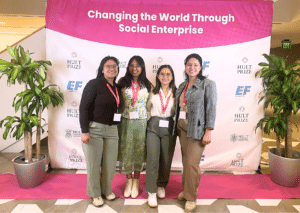
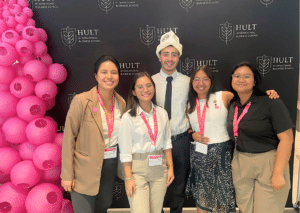
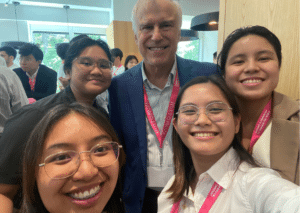
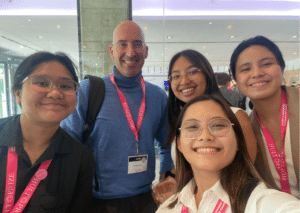
Figure 9. Pictures during Hult Prize Summit Boston with the team (top-left), Francisco da Silva from GRAFF (top-right), Mark Pacelle from Boston College Carroll School of Management (bottom-left), and Carlos Fonseca from TransUnion (bottom-right). - StartUp QC: The team was able to win a local government competition and immersed in a community of startups and also gained mentors from the competition. The team was able to validate a lot of ideas and problems in the competition
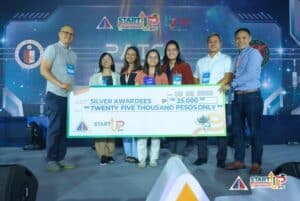

Figure 10. Picture during StartUp QC Student Competition. - Sandbox: The Sandbox Student Challenge is a program hosted by Arete that supports students to explore and do research on their field of interest. It’s a dynamic platform that leverages the power of social capital to drive innovation around the research interest.
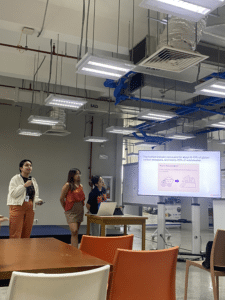
Figure 11. Picture during the Sandbox Student Challenge Demo Day. - Hey Roomie: Patch was able to secure a partnership with Hey Roomie, a startup that provides a virtual HQ for communities. This collaboration enhances community engagement and connectivity in the digital age. This virtual environment is designed to replicate the benefits of physical spaces while offering the flexibility and accessibility of online interactions.
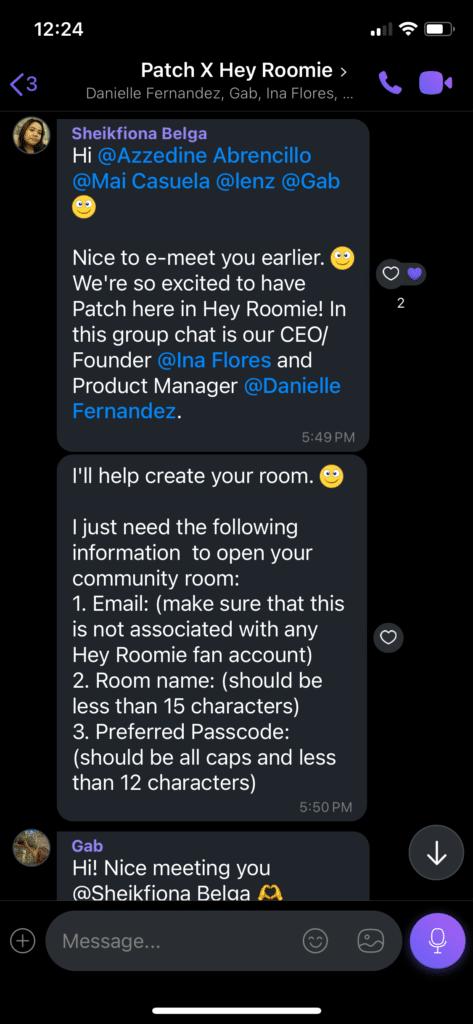
Figure 12. Screenshot of some correspondence with HeyRoomie. - Founders Community: The team is in contact with other startups that are women-led to create communities and also uplift each enterprise. This initiative is centered on fostering connections, sharing resources, and driving mutual growth among enterprises led by women. There is an ongoing engagement and a strong emphasis on community-driven growth.


Figure 13. Screenshot of some correspondence with Parubaro and VitalRadar regarding creating a founder’s community.
Intellectual Capital
Our complete team roster can be found in Figure 6. However, Figure 14 shows the division and clear responsibilities of each executive.
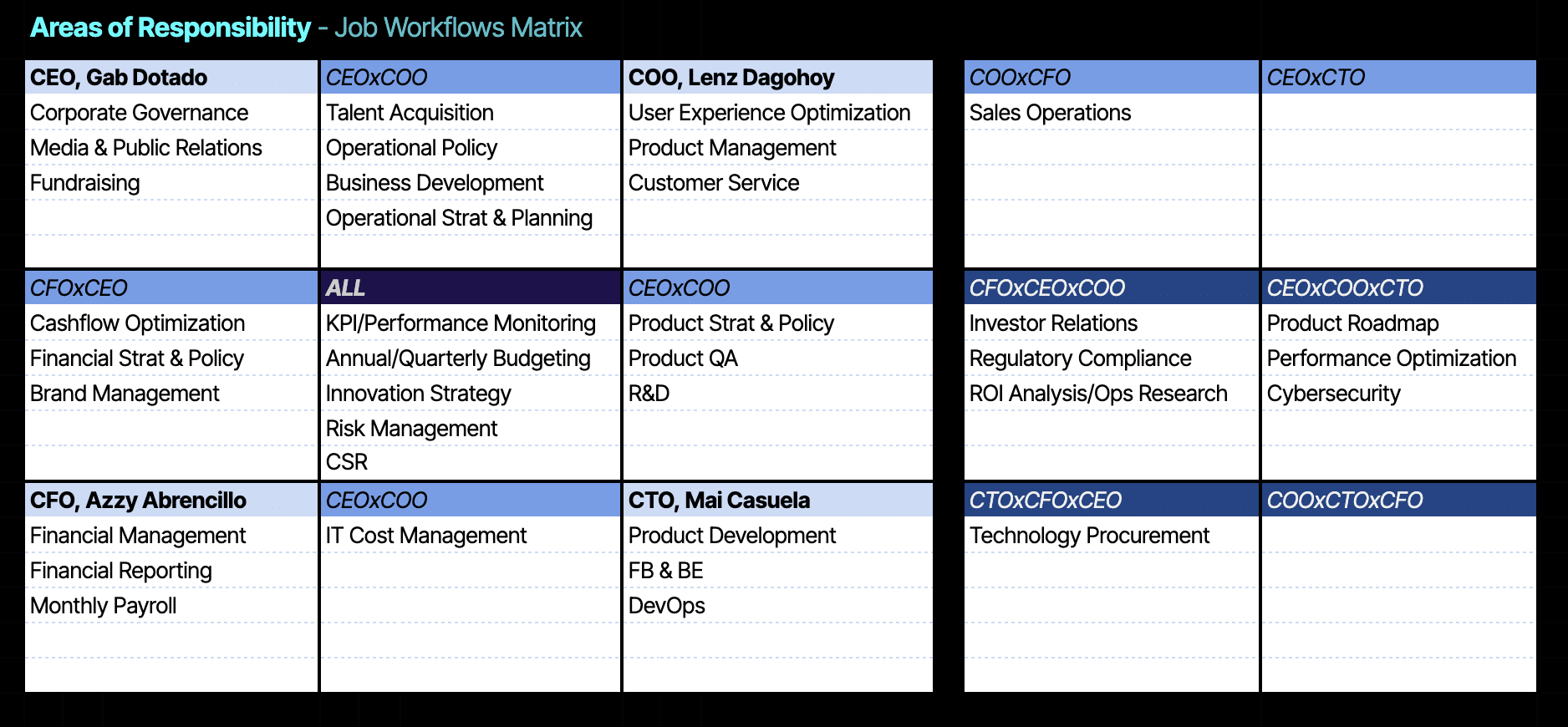 |
| Figure 14. Corporate area of responsibility of Patch’s management team. |
We are also currently exploring our options and seeking guidance in patenting our product and the company assets. So far, we had an exploratory meeting with Ms. Vanessa Malapit last July 8, 2024 regarding the technologies and assets that we can patent and what is our possible roadmap for this. Ms. Malapit is currently the head of the Protection and Education Group of the Ateneo Intellectual Property Office.
 |
| Figure 15. Corporate area of responsibility of Patch’s management team. |
Manufactured Capital
The following spaces have been maximized by the team to organize their team meetings and execution of plans. The Ateneo Blue nest provides a co-working space for the team which can be utilized to organize meetings. The team also rented a small unit to be their office and do their late night meetings and work.
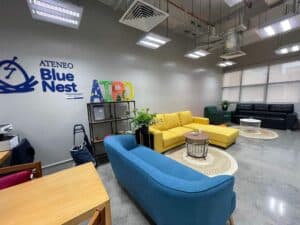 |
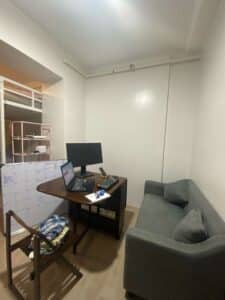 |
| Figure 16. From L to R, the Blue Nest Working Space provided by the Ateneo Blue Nest incubation, and the Patch office at Studio A, Quezon City. | |
Financial Capital
The team’s current fund from the Quezon City local government is still being processed. The funds will be used for the current tech development and beta testing for the last few months of 2024.
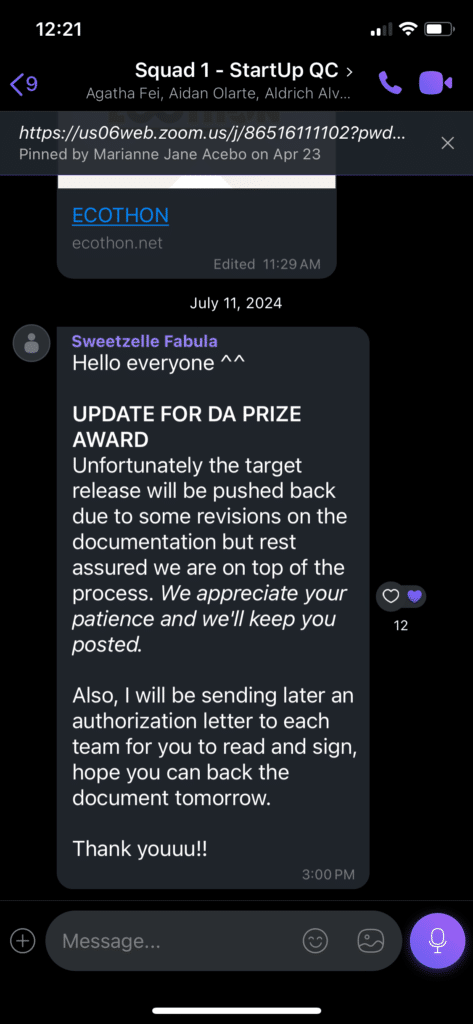 |
| Figure 17. Message from the organizer of StartUp QC about the startup funding. |
Our team was also able to secure a possible angel investor. After a pitch session with Jess Macasaet and his ESG investment team, they expressed their interest in investing in Patch. We will be finalizing the investment terms in the following weeks together with his team.
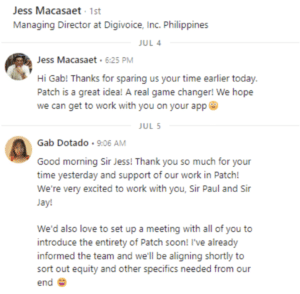 |
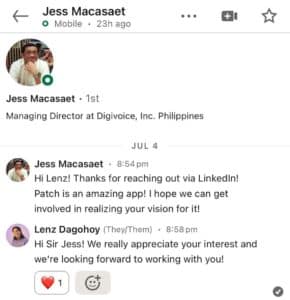 |
| Figure 18. Chat log post-meeting with Jess Macasaet and our founders. | |
Our team also reached out to Dr. Eng Han Tan who is a venture capitalist in Singapore. We will be meeting with his team within the week and possibly secure a slot in the upcoming fair this September that will be joined by investors and entrepreneurs.
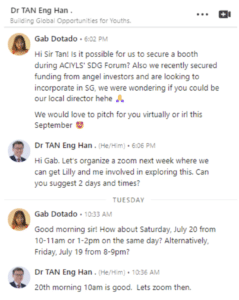 |
| Figure 19. Correspondence with Dr. Eng Han Tan scheduling a pitch meeting to secure a booth in a Singaporean sustainability fair organized by OSG Youth Alliance. |
B2. Business traction
Outcomes from our waitlist
Our waitlist consists of sellers and avid thrifters, and from those we contacted several sellers to talk about our application. We’ve launched our waitlist for a few weeks and we were able to receive over 140 signups for 7 countries in Southeast Asia. We have partnered with 20 high volume sellers with a reach of 71,000 potential buyers. The number of signups from buyers and sellers continues to increase as we gain more social media presence and as we are nearing our launch date.
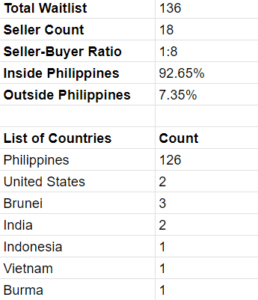 |
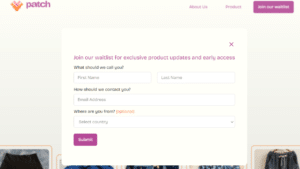 |
| Figure 20. Patch waitlist as of July 2024 | |
Feedback and solution adoption
We are currently in the process of building our mobile application and have been contacting sellers from our waitlist. We are solidifying the user experience by consistently asking for feedback via our discovery calls.
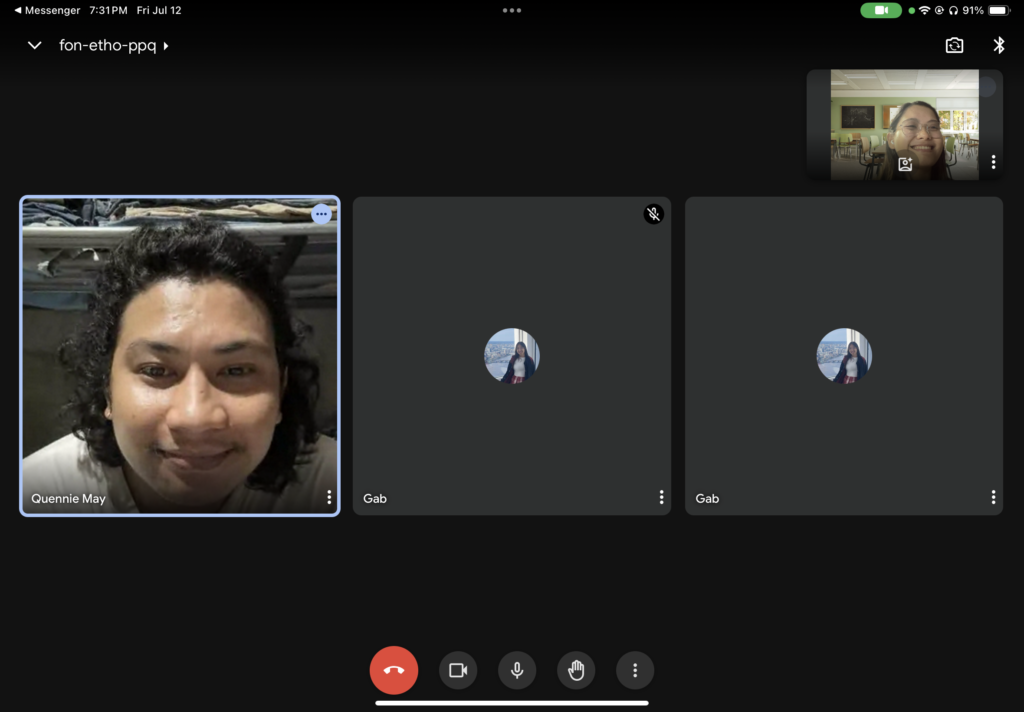 |
| Figure 21. Call with Instagram seller @vintagethrifts.boi. |
With one of our calls, the seller expressed how it takes her 9 hours to do her inventory (a process that involves taking pictures of the items, creating descriptions and titles for the items). This seller also serves as a consignment store, thus they are often met with a high volume of clothing inventory. When we described the process of how Patch’s vision to text feature could assist in that process, she expressed how this would cut down time. She is now signed up as one of our early beta testers for the app. Sellers will be able to manage their inventory within the app and have the option to post to different platforms, increasing visibility in different social platforms.
Automated price benchmarking is a feature unique to Patch as we would like to promote fair market prices to both sellers and buyers. We have observed that thrifting has become inaccessible in terms of affordability as there are sellers who would overprice. This exploitative practice can dissuade buyers from supporting online thrifting shops.
To promise a more personalized AI-assisted experience, we are in the process of training our own AI model to enhance listing processes that are specific to recognizing more garments and patterns. Price benchmarking requires a more refined algorithm as well we will be using public and system data.
Moreover, Patch also generates checkout pages that can be easily generated and shared by sellers. We acknowledge that sales conversion is a priority for the sellers we talked to. They emphasized how they would engage and pay for these tools if it gives them the opportunity to increase sales. Given that these sellers have existing sales channels, we developed a checkout page generator that allows sellers process payments and shipping for their clothes.
For our second seller, he has been selling vintage and pre-loved clothes online for four years. He expressed how online platforms for selling are purely manual labor from taking a picture, creating caption, and reposting of items unsold. It takes him an average of 3 hours to finish inventory and take pictures of just 40 items. He also expressed how other platforms require manual reposting of items and curating it again which again takes up too much of their time. After the call, he expressed his interest with the auto caption and personalized AI thrifting for both buyers and sellers.
Interest and advocacy building
Last July 6, 2024, Patch also served as a panelist during the information session for the 2024 ASEAN-China-India Youth Leadership Summit, a startathon and seminar on sustainability.
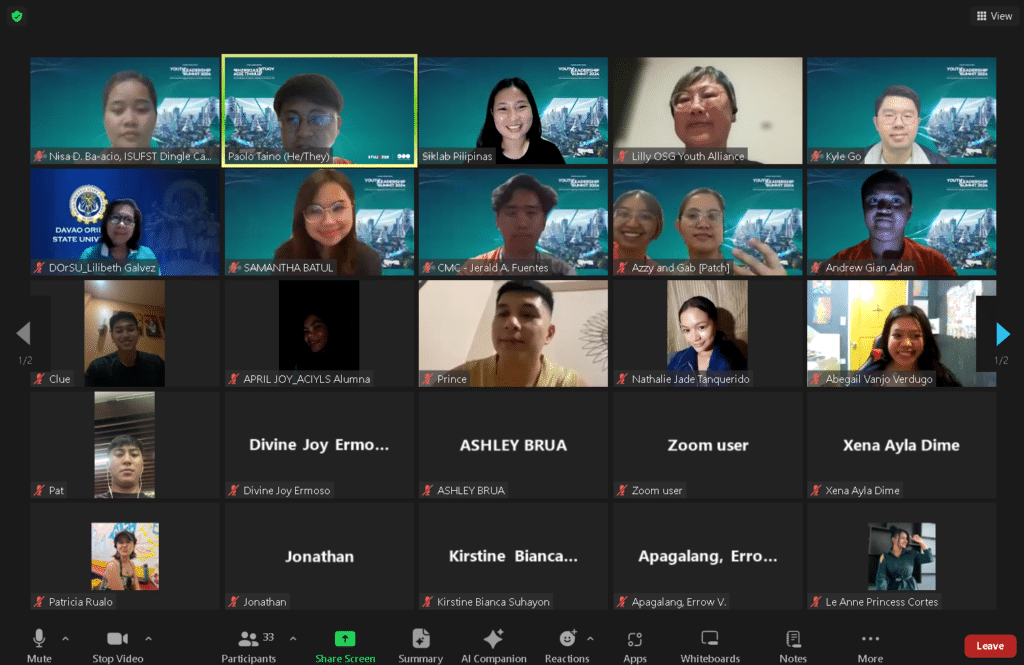 |
| Figure 22. Call with aspiring participants of the ASEAN-China-India Youth Leadership Summit where Patch was a panelist. |
B3. Risk management
We’ve identified the different areas we may engage in regarding ESG as a company and have mapped it to a matrix to identify its importance to stakeholders and importance to the business. We found that in order to maintain sound practices in ESG, our priority areas are in policy, supporting SMEs and impact creation. Specific to the industry we are participating in, we would like to displace garments produced by fast fashion and to increase the rate of fashion circularity.
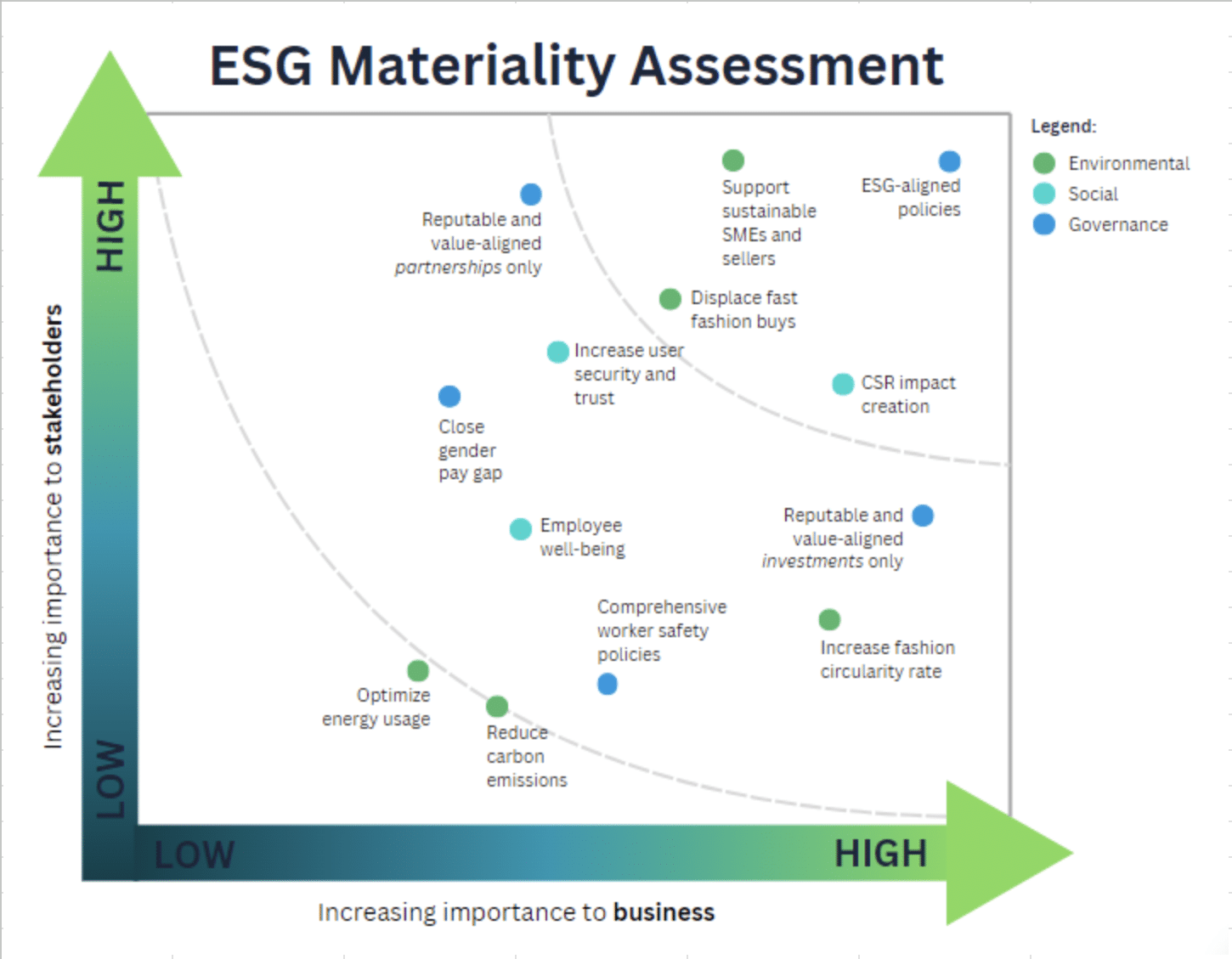 |
| Figure 23. Patch’s ESG Materiality Assessment for Risk Analysis. |
In mapping out the ESG risk model, we identified the different risks using a heat map in two dimensions: probability and consequences.
Risks related to environmental impact include logistics, packaging and high-carbon footprint operations. Risks in the area of social impact include lack of user engagement in sustainability initiatives, contribution to textile waste and exploitative labor practices that exist in the industry. For corporate governance, its risks include lack of environmental reporting and transparency, substandard ESG policies and implementation, and data privacy and cybersecurity threats.
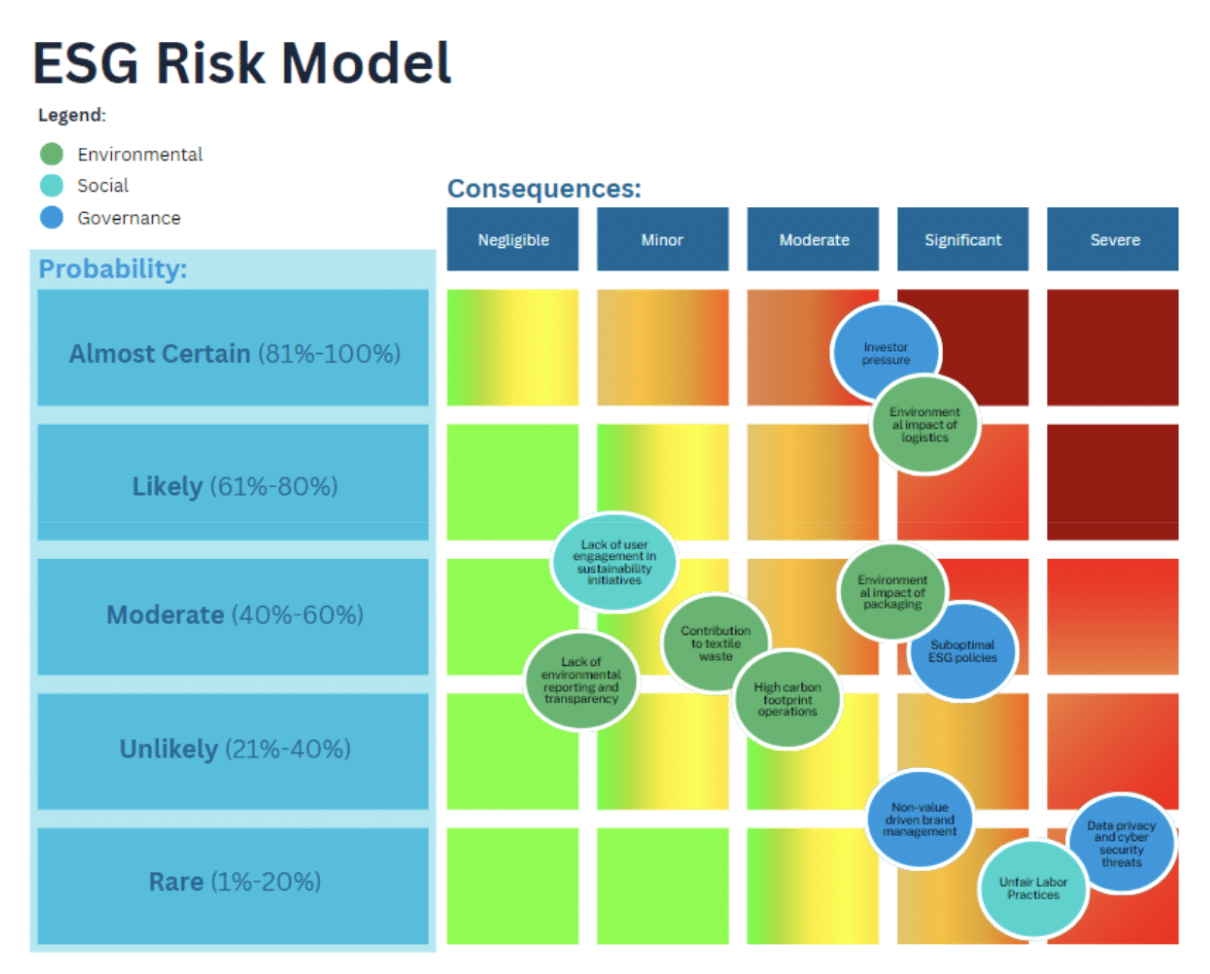 |
| Figure 24. Patch’s ESG Risk Significance Model. |
Discussing the different risks and its rationale behind its mapped position allowed the company to come into conclusion about its risk exposure. Without this we would be positioned t o not only fail as a business but to deliver the impact promised.
Environmental Risks
- Environmental Impact of Logistics: There is a risk that Patch’s operations or supply chain may have negative environmental consequences. This could be due to high carbon emissions from transportation, inefficient resource use, or other environmentally damaging practices.
- Environmental Impact of Packaging: This risk is deemed as significant as packaging choices can contribute to environmental harm led by excessive waste generation or the use of non-recyclable materials.
- Lack of Environmental Reporting and Transparency: The lack of transparency in Patch’s environmental reporting could raise concerns about the company’s environmental performance and its commitment to sustainability. Thus, this risk may occur and be significant if not actively held accountable.
Social Risks
- Lack of User Engagement in Sustainability Initiatives: This risk is deemed possible and moderate. Patch’s initiatives may lack reach or interest in areas of fashion sustainability and circularity among the target audience.
- Textile Waste Contribution: This risk is probable as the products or processes of upcycling garments can still lead to textile waste generation.
- Unfair Labor Practices: This risk is considered rare and minor, as we assessed we have a relatively low risk of being involved in unfair labor practices. However, it’s important to note that even rare risks can have severe consequences if they occur.
Governance Risks
- Suboptimal ESG Policies: This risk is deemed possible and significant, as the ESG policies we will develop may not be comprehensive or effective enough to address its ESG risks.
- Non-Value-Driven Brand Management: This risk is probable and moderate, as brand management practices may not align with its ESG values if not matched with the right social capital, potentially leading to reputational risks.
- Data Privacy & Cybersecurity Threats: This risk is probable and moderate, as we may be vulnerable to data breaches or cyber-attacks without the right infrastructure, protocols, and people in place, which could compromise sensitive information and damage its reputation.
For our risk mitigation strategies:
- Introduce relevant insurances: We plan to offer a more comprehensive approach to security by safeguarding our sellers and buyers from social engineered scams and such related attempts.
- Enhance Environmental Reporting and Transparency: We plan to do periodic reviews for the environmental reporting framework to provide stakeholders with more comprehensive and transparent information about our environmental performance, goals, and progress.
- Develop Comprehensive ESG Policies: We plan to develop ESG policies that are comprehensive, measurable, and aligned with our company values and long-term sustainability goals. This includes creating standards for partnership with different companies.
- Strengthen Cybersecurity Measures: We plan to invest in advanced cybersecurity infrastructure, protocols and professionals to safeguard sensitive data, protect against potential threats, and ensure the privacy and security of our customers and stakeholders.
- Foster Stakeholder Engagement: We plan to actively engage with our stakeholders through various channels to gather feedback, address concerns, and foster a collaborative approach to our ESG journey.
- Fund User Engagement Initiatives: We plan to actively create different initiatives to nurture our community of sellers and buyers. Through this we can ingrain the practice organically that can improve the call for collective action.
By focusing on these action points, we are confident in our ability to mitigate risks, drive positive impact, and create a more sustainable future for Patch and the communities we serve.
C. ESG performance
C1. Overall impacts on the society and environment
At scale, Patch can reintroduce a billion items back into circularity by maintaining at least 20% user growth for the first three years and achieving at least 35% active users with an 80% purchase rate. With effective marketing campaigns, optimal ad creation and spend, and ensuring high-value user experience, the attainment of these metrics is reasonably feasible based on our projections.
Most importantly, achieving this goal has significant benefits, also known as positive externalities, even for those who do not thrift. Positive externalities are defined as benefits experienced by third parties due to the actions of others. In the context of reintroducing a billion items into circularity, the positive externalities include:
Environmental Positive Externalities
- Cleaner waterways due to reducing textile waste decreases the pollutants entering our waterways, contributing to a healthier environment.
- Reduction in greenhouse gas emissions by minimizing the demand for new clothing production, which is resource-intensive and emits significant greenhouse gases, circularity helps in lowering overall carbon footprints.
- Conservation of natural resources through extending the life cycle of garments reduces the need for raw materials like cotton and synthetic fibers, conserving water, energy, and other resources
- Reduced Landfill Volume through decreasing the volume of discarded textiles alleviates pressure on landfill sites, preserving land for more productive uses and reducing environmental degradation.
Social Positive Externalities
- Healthier living environments like less cluttered closets due to encouraging the circulation of garments helps reduce household clutter, leading to better liveable spaces.
- Increased financial stability due to individuals being able to earn passive income from selling unused clothing, or reworking items for sale at a higher price point.
- Promotion of sustainable practices due to increased visibility and adoption of circular fashion can inspire other industries to implement similar sustainable practices, leading to broader environmental benefits. Moreover, an increased rate of awareness facilitates education of consumers about circularity, sustainability and responsible consumption (and other concepts), leading to more informed and conscientious purchasing decisions.
- Enhanced community cohesion as communities may come together through local swap events or online platforms, fostering a sense of shared responsibility and cooperation.
- Support for local economies by small businesses and independent sellers being able to thrive in a circular economy, benefiting local economies and creating jobs.
- Improved public health through reduced environmental pollution and lower greenhouse gas emissions contribute to better air quality and overall public health.
- Global environmental impact wherein the collective impact of multiple entities adopting circular fashion practices can lead to significant positive changes on a global scale, contributing to global environmental sustainability efforts.
Governance Positive Externalities
- Enhanced corporate social responsibility through setting a precedent on transparency and ethical behavior, Patch can lead by example in corporate social responsibility. This involves not only adhering to ethical business practices but also actively engaging in initiatives that benefit society and the environment.
- Greater corporate accountability & transparency by ensuring that all levels of the organization are accountable for their actions. This includes clear reporting structures, regular audits, and transparent communication with stakeholders.
To realize these considered externalities, Patch integrates Environmental, Social, and Governance (ESG) principles into its core operations, contributing to sustainable growth and positive impact. Below is our ESG framework listing our initiatives and KPIs which Patch would adopt as a sustainability strategy guide to increase positive environmental impact, promote social responsibility, and improve corporate governance.
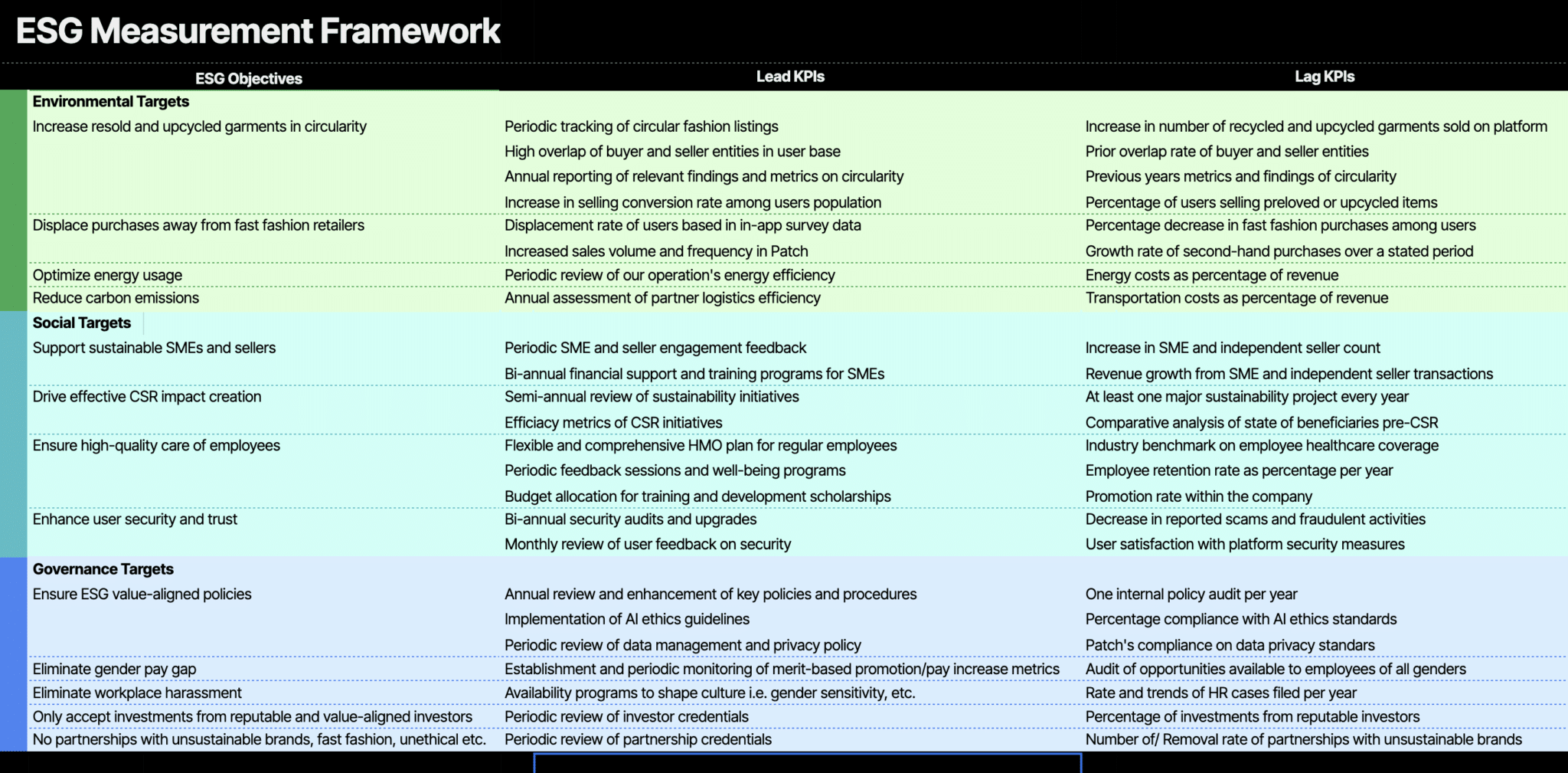 |
| Figure 25. Patch’s ESG Measurement Framework. |
In this ESG measurement framework, Lead KPIs are used to predict future performance and help guide decisions on adjustments to operations, policy, etc., while lag KPIs measure the results of past actions thus is useful when measuring the efficacy of our enacted initiatives.
How Patch contributes to ESG based on SDG criteria
Impact of our Environmental Targets
Under SDG 12: Responsible Consumption and Production, Patch plays a pivotal role in waste diversion by effectively diverting an average of 350g of clothes per item sold. With our forecast, we expect to displace 183 tonnes of clothes by the end of 2025. This effort supports target 12.1.1 by aiding the shift to sustainable consumption and production through policy instruments.
Moreover, by promoting the sustainable management and efficient use of natural resources, Patch contributes to target 12.2, which aims to lower the material footprint per capita hence also aligning with target 12.5, we focus on substantially reducing waste generation through prevention, reduction, recycling, and reuse.
Impact of our Social Targets
Under SDG 8 (Decent Work and Economic Growth) and SDG 9 (Industry, Innovation and Infrastructure), Patch drives economic empowerment by enabling sellers to earn an additional $500 per week online compared to selling in physical spaces, resulting in a $2,000 monthly revenue increase. We also provide increased opportunities for passive income generation.
Additionally, Patch’s operations can help support thrift shops in their stock acquisition through two ways: (1) an online wholesale consignment service, facilitating a more efficient, equally affordable and sustainable supply chain for these small businesses, and (2) spotlighting their contributions to the circular fashion economy through providing a pipeline in circular fashion infrastructure. This effort supports target 8.1 by contributing to sustained per capita economic growth and aligns with target 8.2 by achieving higher levels of economic productivity through diversification, technological upgrading, and innovation.
Impact of our Governance Targets
As part of its commitment to employee well-being we’ll be offering comprehensive HMO plans for regular Patch employees in partnership with Hive Health, a Singaporean health-tech startup providing automated and seamless HMO plans to Southeast Asian SMEs. Under this initiative, we aim to work towards diversifying our HMO coverage plans to be flexible and optimally accommodate the contexts of our employees i.e. unmarried employees with no dependents can opt to avail a comprehensive HMo plan with vet coverage.
Below is a quick rundown of benefits provided by a partnership with Hive Health.
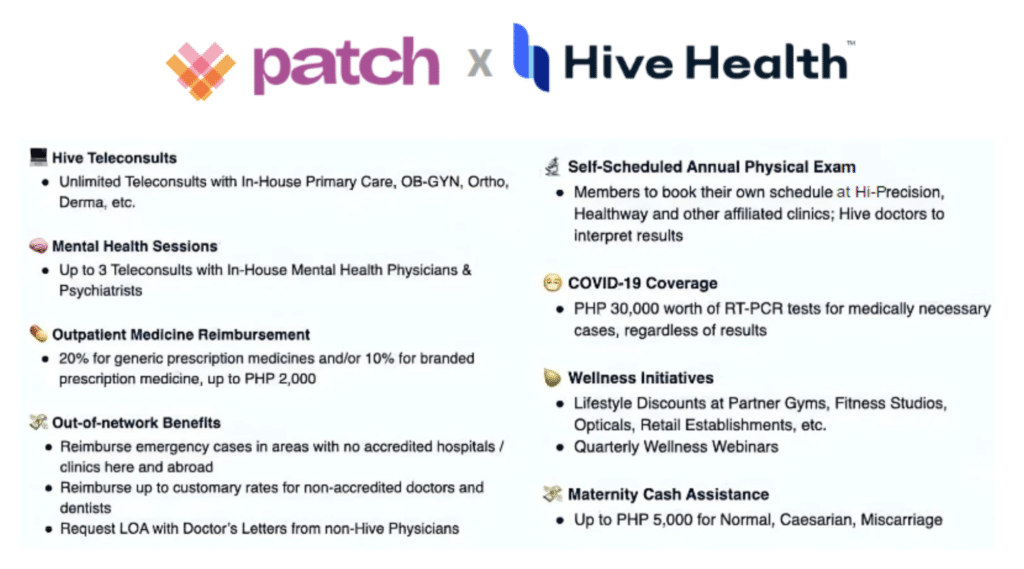 |
| Figure 26. Additional coverage included in Hive Health’s HMO plan. |
Moreover, in meeting our ESG Lead KPIs, we would also be able to fulfill our goal of providing a comprehensive career development program for our employees. This includes coverage of certification courses and graduate school scholarship programs for tenured employees.
C2. Governance structure
How we intend to succeed in ESG impact creation
At the start of our operations, we’ll be instating an ESG committee divided into two task forces, each specifically focused on ESG strategy and monitoring.
- ESG Strategy Task Force: The ESG Strategy task force will be responsible for developing and implementing the ESG policies and initiatives that align with our company values, CSR, and short-term and long-term goals. This entity is responsible for creating and organizing at least one ESG initiative annually. Moreover, the goal of this entity is to ensure that our decisions, operations and policies consistently reflect our commitment to sustainability and ethical practices.
- ESG Monitoring Task Force: The ESG Monitoring task force will be responsible for tracking, benchmarking, and reporting our ESG performance on a quarterly and annual basis. This includes monitoring our environmental impact, social contributions, and governance practices to ensure we meet our targets and remain accountable to our stakeholders.
This initial corporate structure involves the entirety of the board of directors and the management team, and aims to establish a strong and centralized foundation of our ESG initiatives. Such will enable Patch to systematically implement and refine its ESG policies, ensuring that we not only comply with industry standards but also set new benchmarks for responsible corporate behavior. Most importantly, we will welcome periodic ESG audits and schedule ESG-specific reviews on policies and initiatives (as detailed in Figure 25 above) at least once a year.
 |
| Figure 27. Patch’s ESG governance structure. |
In the near future, this ESG corporate governance structure will become more integrated into the workflow through creating divisional strategy and monitoring task forces. However, such a structure is not yet appropriate for our current capacity and human resources. Therefore, we will keep this goal in mind and move forward with our operations following said structure above.
The steps we took to validate our ESG objectives
- We consulted with authorities regarding tax compliance. In order to bolster our social and governance impact creation, Patch scheduled an exploratory call with an auditor currently working in the Philippines government’ taxation and auditing bureau. Through this call, we were able to gather ideas on the documents, processes, and legal requirements needed for the company to be fiscally compliant. Moreover, we were given advice on how to optimally allot a periodic budget for the company’s finances.
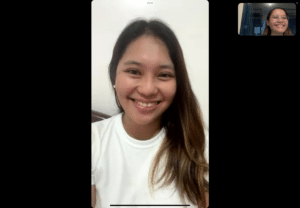
Figure 28. Meeting with Kamille Jalos, an auditor at the Bureau of Internal Revenue. - We set counsel with a corporate officer and attorney specializing in labor relations. Meanwhile, in terms of regulatory compliance, our team is scheduled to meet with our advisor Atty. Gaerlan to discuss labor law compliance and other significant aspects of corporate governance such as optimal employee compensation packages, employer-employee relationships, etc. To this end, the team is working towards ensuring that we are able to access all pertinent legal compliance information with regards to our Philippines operations.
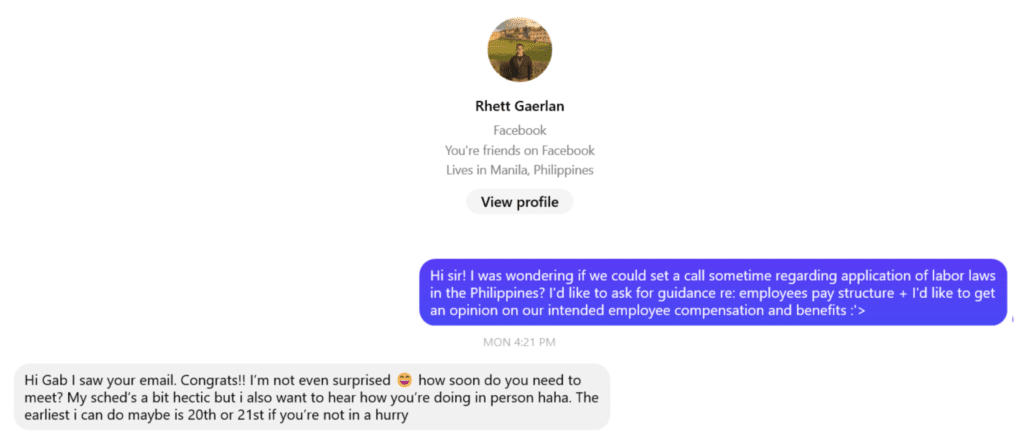
Figure 29. Correspondence with Atty. Gaerlan on Philippine labor law. - We coordinated with an online community builder for increasing social impact. On another hand, we also made active strides towards increasing our social impact in terms of increasing awareness on thrifting’s value and benefits. In order to do so, we have committed to pursuing community building online as a way to onboard more people to care about thrifting and fashion circularity as we can. At present, we are working with Hey Roomie, a Filipino startup creating digital spaces i.e virtual HQ for a wide variety of communities such as K-Pop, P-pop, Women’s health groups, etc. We have already onboarded with Hey Roomie and secured a room for our first set of product quality assurance and beta testers. This is beneficial for our community building efforts and in increasing business traction as a high volume of users continue to onboard in-app. Moreover, this partnership will also be beneficial for facilitating and receiving immediate feedback from potential Patch users as Hey Roomie creates a space for engaging discussions. As such, these conversations will help the team improve and pivot along the way to better respond to our customer’s needs and wants.
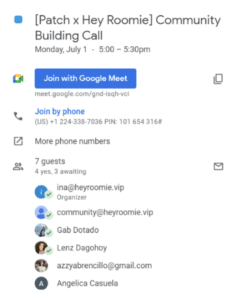
Figure 30. Exploratory meeting with Ina Flores, CEO of Hey Roomie, for a potential partnership. - We sought professional guidance for ESG strategy and monitoring. Our team was also able to secure an advisory call with an ESG analyst currently employed in one of the country’s leading consultancy firms. Ms. Dubhe Mayor was willing to share her expertise and also help us with creating a specific ESG framework for the company. We are expecting to set a meeting and discuss our targets to ensure all our stakeholders will understand the ESG objectives. This will be a great way to effectively communicate our impact and report to all of our stakeholders.
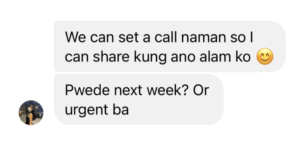
Figure 31. Correspondence with Dubhe Mayor, a Senior Associate at SGV Philippines, asking for guidance on building an ESG framework.
D. Learning curve
The team continues to improve the business model as we continue to speak and engage with our stakeholders. We have highlighted our key assumptions and their needs and wants which we discovered throughout the past few weeks. These findings will be used to create an improved and better business model. This strategy will help the team improve Patch and the service it can provide.
| Table 2. Stakeholder analysis. | |||
| Stakeholder | Assumptions | Needs and Wants | Our Action Plan |
| Sellers | Patch observed that selling is purely manual labor. This includes taking photos and inventory. Sellers have to curate everything. Existing platforms give them the freedom to manage their account. | Sellers allot an average of 7.5 hours per week to do the first process of selling. This is the first step of the selling journey. They also deal with management of buyers in between and securing transactions.
Aside from these, sellers are expected to limit their daily posting which can be a hassle for people who work another job. Reposting unsold items requires manual labor again. Sellers want a more convenient way of selling while increasing sales. |
Patch wants to decrease the time it takes for sellers to do the pre-selling requirements so that they can allot more time in managing the buyers and also create a livelihood that is not time consuming.
Patch will then continue to seek feedback from sellers with increasing the 40 items limit upload into 45 items and then availing a premium account to increase the limit. Patch will also explore the auto curation and scheduling of posts to give ease to sellers who have to work on other jobs and also to post on times where there are high volumes of buyers. Reposting sold items will also be automated so that this will lessen the manual labor needed from the seller. |
| Buyers | Buyers hesitate to go online thrifting due to insecurity and limited options. | Buyers want a secure and trustworthy platform to do transactions. Existing platforms require a phone number for verification which is still prone for scams.
Some buyers want to shift into eco-conscious fashion but overwhelming where to start in the existing platforms. |
Patch will offer another security feature to lessen scams and frauds. This will have continuous feedback from buyers to ensure that the additional step will not increase friction in their buyer journey.
Our platform centers on the re-commerce market from pre-loved, reworked, and brand new eco conscious items. Buyers do not need to search stores one by one and decrease the hassle to find good items that are worth the price for eco conscious items. |
| Investors | Legal compliance and proof of profitability will be asked from the team. | Impact investing needs more than the traditional assumptions in investings.
The team should have a clear vision for its impact and communicate ESG objectives effectively to their stakeholders. |
Patch continues to work on their ESG framework while ensuring that with our expansion, the impact also scales with us.
A clear plan will be discussed in the coming days to strategize our ESG framework to show our commitment to our vision and mission as a company. |
From these learnings, we were able to recreate our social business canvas which is detailed in the figure below.
 |
| Figure 32. Social business canvas updated as of July 2024. |
References
Carousell. (2021). The Carousell Recommerce Index 2021 Report.
Statista. (2023a, April 17). Sustainable online shopping by country 2021. https://www.statista.com/statistics/1285023/sustainable-online-shopping-by-country/
Statista. (2023b, July 4). Users of e-commerce Philippines 2023, by age group. https://www.statista.com/forecasts/1315489/philippines-ecommerce-users-by-age-group
Tan, Y. R. (2022, July 7). Is thrifting really the answer to fast fashion woes? Millieu Insights. https://www.mili.eu/sg/insights/is-thrifting-really-the-answer-to-fast-fashion-woes
ThredUp. (2023). ThredUp Resale Report 2023.
